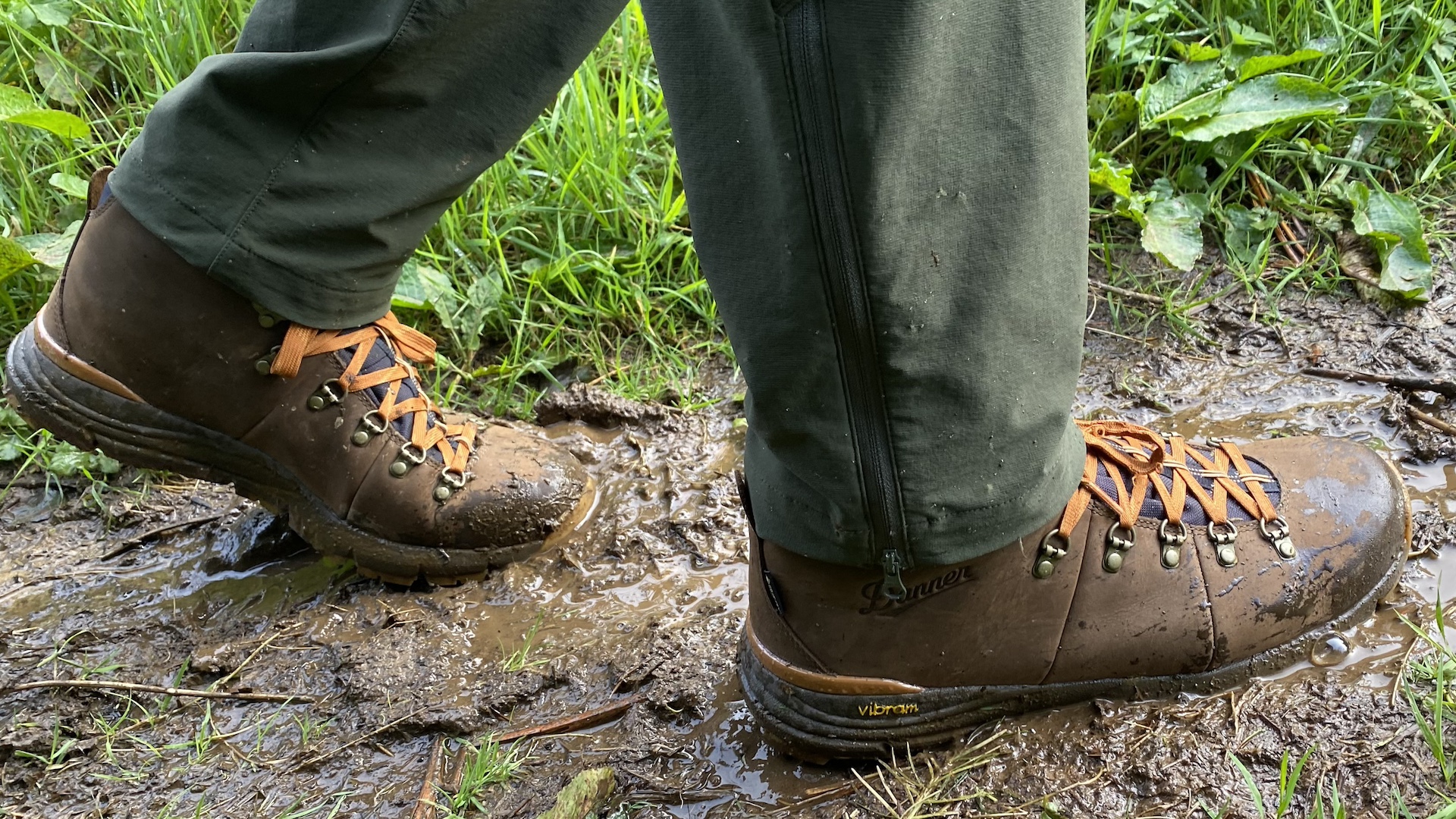Advnture Verdict
With sumptuously soft, full-grain leather upper and high-end Vibram midsoles and outsoles, the Mountain 600 Leaf GTX boots from Danner are supremely comfortable and well tooled up for long days and big weekends on the trails. Lightweight, but highly supportive and armed with superb grip, they’re ideal for small overnight backpacking escapades across three seasons, but don’t go attempting anything too tricky or technical while wearing them. Also, while they are waterproof enough to keep the weather out, a poorly integrated tongue design means you’re likely to get wet feet if you encounter a river or stream crossing.
Pros
- +
Excellent grip
- +
Instantly comfortable
- +
Lightweight
- +
Good ankle and foot support
- +
Resoleable and recraftable
- +
Some recycled materials used
- +
Available in wide fit
- +
Good looking with great color options
Cons
- -
Only waterproof to the ankle
- -
Leather requires care
- -
Not suitable for vegetarians and vegans
- -
Pricey
You can trust Advnture
Meet the reviewer
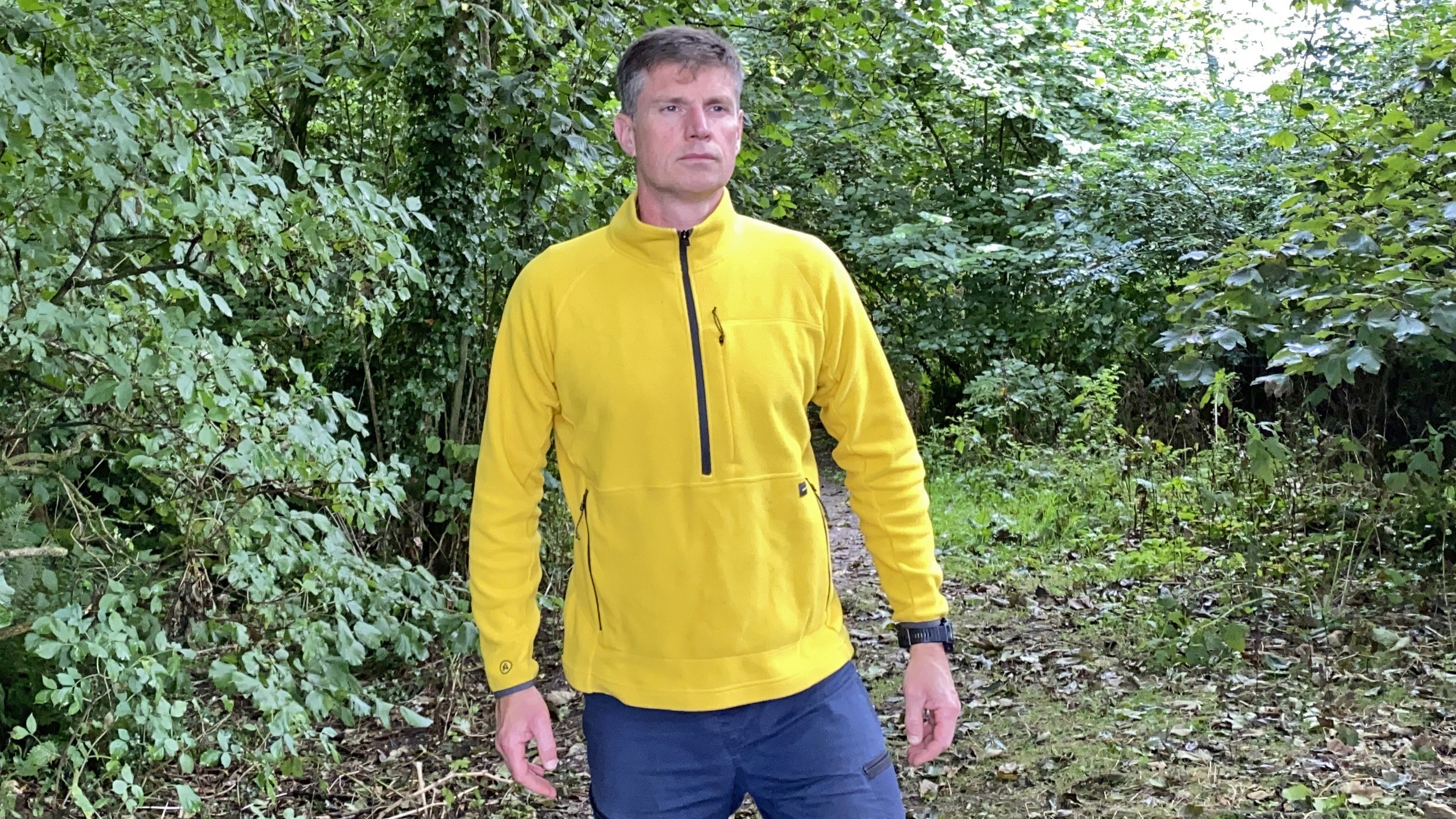
Pat has hiked all over the world, his adventures taking him to Mont Blanc, the roof of Western Europe; the Norwegian Alps; the highest peaks on Australia; and New Zealand’s Great Walks – among others. He’s an experienced tester of hiking footwear and gives each pair a thorough thrashing before reviewing.
Danner Mountain 600 Leaf GTX: first impressions
Portland-based American outdoor footwear brand Danner generally produce walking shoes and hiking boots that mix good trail performance with some stylish panache, and the new Danner Mountain 600 Leaf GTX is no exception. Looking at them over straight out of the box, it was immediately clear that the build quality is excellent, with high-quality components used throughout, from the metal lace eyelets to the footbed and Vibram midsole and outsoles.
• List price: $220 (US) / £220 (UK)
• Gender availability: Male / Female versions
• Weight (per boot): 510g / 18oz
• Materials: Full-grain leather upper, Gore-Tex lining, Ortholite ECO footbed, Vibram SPE midsole, Vibram Fuga outsole with Megagrip
• Colors: Grizzly Brown & Rodeo Red / Loam Brown & Glazed Ginger / Obsidian & Kangaroo / Choc chip & Roasted Pecan
• Compatibility: 3-season, non-technical hiking with or without a pack, in a range of environments and conditions, from forest paths to alpine trails
I’ve been wearing these boots regularly for several months now, and they are showing no signs of wear and tear, as you would obviously expect from a premium product with a price tag well north of 200 bucks, but I do think they will last many years if the leather is looked after even a little bit.
That said, in their marketing Danner make much of their Recrafting Service, which is available for these boots if you do wear elements of them out. I’m all up for repairing and resoling shoes and boots, but the cynic in me thinks the chassis is far more likely to fail before the robust outsole wears down sufficiently to require replacing, and while the rebuild option does look impressive, it’s so expensive ($280) it would be cheaper to buy a new pair of these boots than get the old ones fixed. Just an idea, but maybe Danner could offer a discount on new boots in return for reusable elements from an older pair?
Lastly, although the collar, liner and footbed are made from recycled textiles, I think going with the name Leaf and focusing so heavily on the fact that they can be recrafted (surely all foowear can be repaired?) is overegging the green credentials of these boots a little.
Danner Mountain 600 Leaf GTX: design and construction
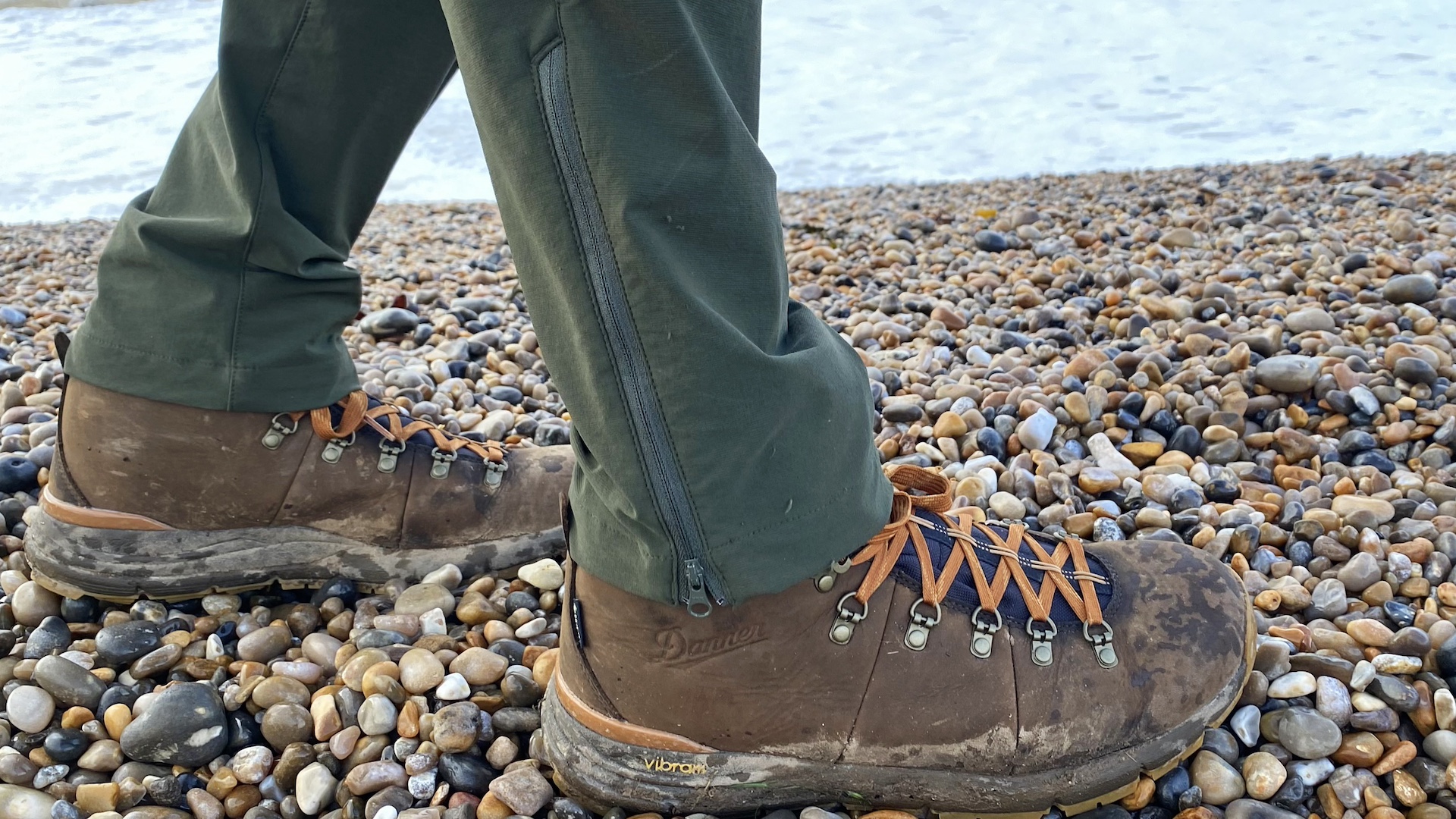
The upper of these mid-height hiking hooves is constructed from luxuriously soft full-grain leather, and I found them to be exceptionally comfortable from the very first outing. The Mountain 600 Leaf GTX boots are also available in a standard width style or a wide version with a more expansive toe box, so you can get the best, most comfortable fit for your feet.
As the name suggests, the leather chassis is backed by a partially recycled Gore-Tex liner, and the Mountain 600 Leaf is as breathable as any other GTX-armed boot on the market (they all run a bit warm in some circumstances, if we’re really honest).
They’re also waterproof, of course, but the gusseted and integrated tongue is only joined to the main chassis up to ankle level, which means the boot can be breached in relatively shallow water (which feels like a fault, and is certainly a weakness).
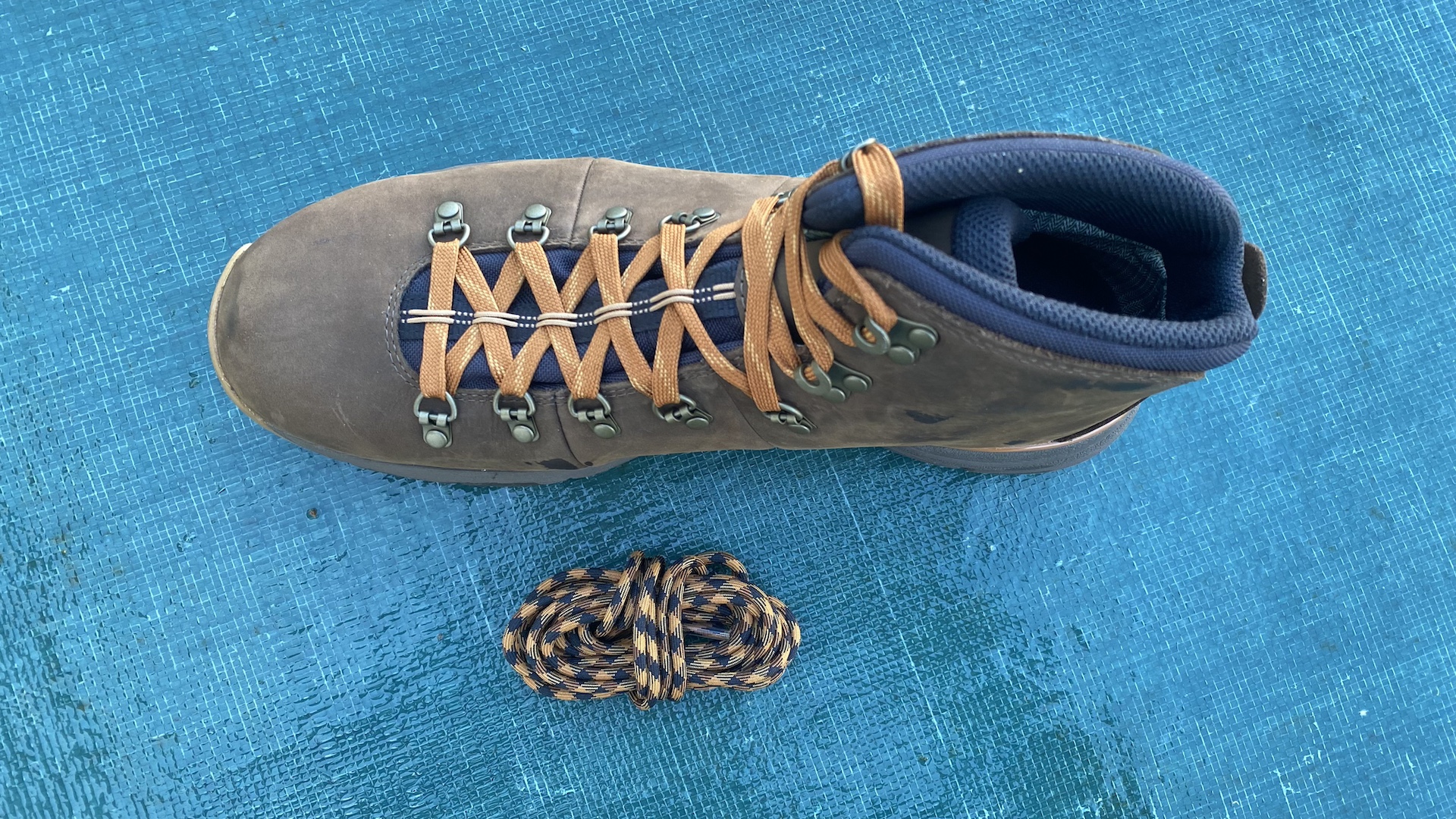
Weighing in at 510g / 18oz each, these are lightweight boots intended for either fast-paced or fairly relaxed adventures (rather than gruelling epics in challenging terrain and conditions), and ounces have been saved by going minimalist with the toebox (which is really small) and a rand that only really covers the heel.
There is plenty to applaud about these stylish and well-made boots though, including the quality of the component ingredients Danner have brought into the design, starting with the footbed. Made from recycled rubber and bio-oil, the removable OrthoLite ECO Footbed is supportive and adds tangible extra cushioning.
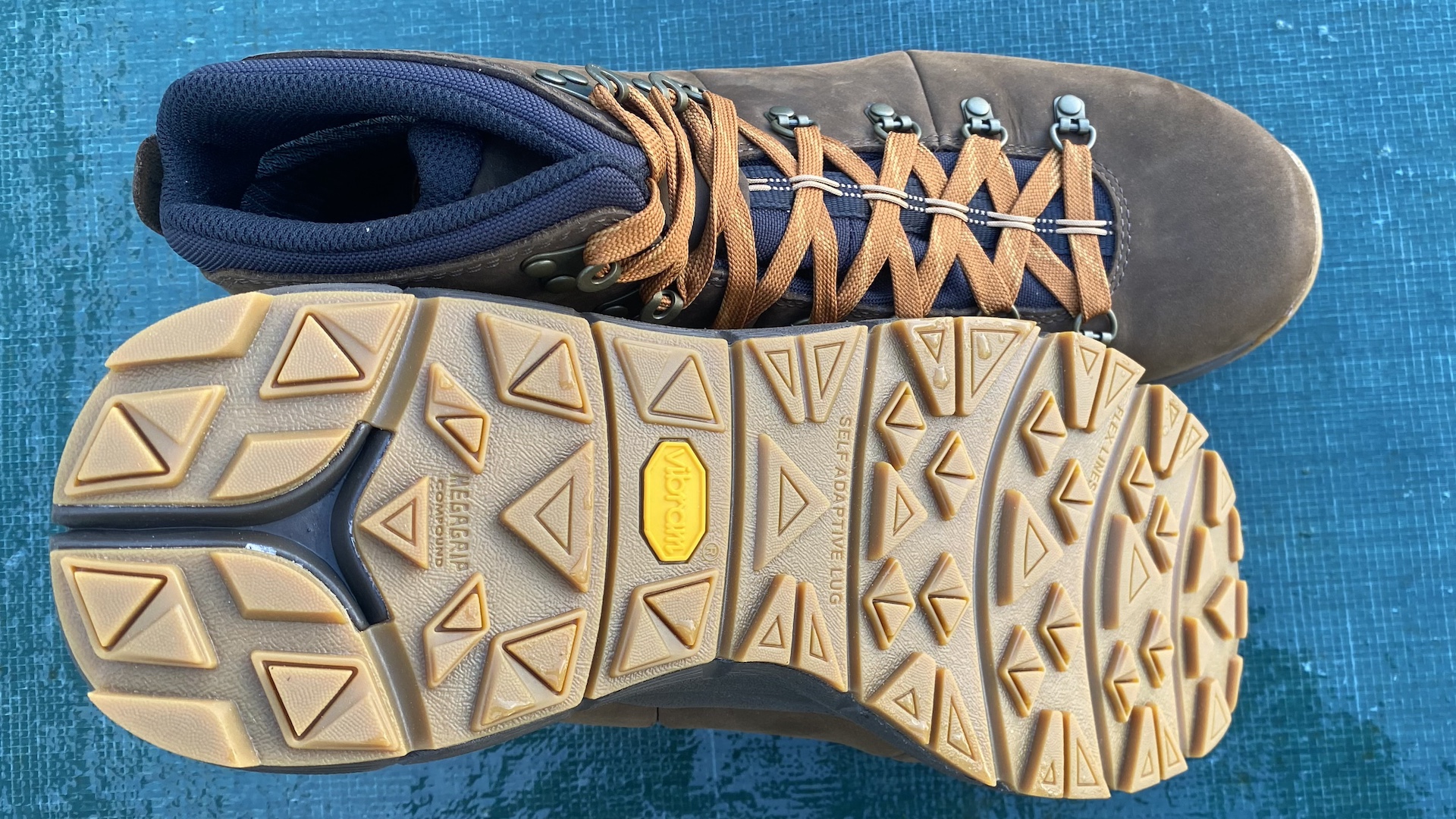
The Mountain 600 Leaf has Vibram midsoles made from SPE, which offers just as much cushioning and rebound as EVA, but is apparently much more robust and longer lasting. The all-important outsole is also supplied by Vibram, and the Fuga design features Megagrip ‘self-adaptive’ diamond-shaped lugs, which are supposed to give you great grip without restricting the flexibility of your foot, plus ‘flex lines’ that further contribute to the dexterity of the boot.
These boots come with two lace options included in the box: a flat lightweight lace that’s simpler to use but weathers quite quickly, and heavier rounded lace that will last much longer. There are five pairs of robust metal eyelets, plus two pairs of speed hooks, and the system facilitates a really good firm grip.
Danner Mountain 600 Leaf GTX: on the trails
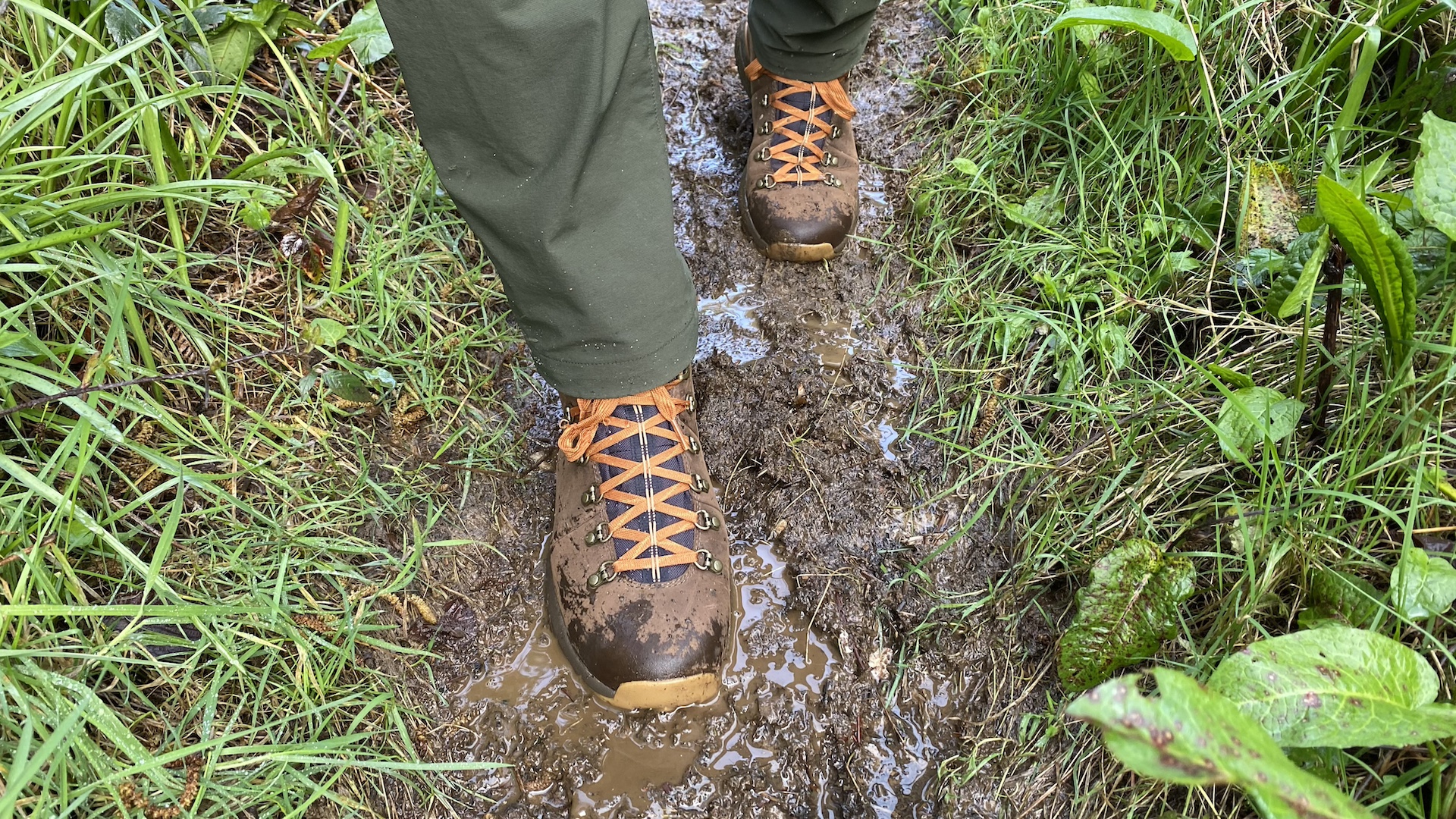
I’ve been hiking around the steep hills, muddy moors and rain-strafed coastline of the South West in these Danner Mountain 600 Leaf GTX boots for the last couple of months now, during the tail end of winter and the tentative start of spring. As mentioned, the leather chassis is super soft, and the boots required no breaking in whatsoever.
The boots are reasonably breathable and reliably waterproof during heavy rain and generally wet conditions, but the tongue is a real weak spot when it comes to stream and river crossings. Because it’s not integrated up to the top of the collar, it is very easy to get wet feet during even relatively shallow stream crossings if the current is moving fast.
I was much more impressed with the performance of the Vibram midsole (which is beautifully cushioned) and the Fuga outsole, which offers excellent traction and good control. That said, I’m somewhat skeptical about the proclaimed ‘intelligence’ of the self-adaptive lugs; while the diamonds supplied good grip, I’m not at all sure their performance was any smarter than the common old chevron-shaped lugs. It just feels like a bit of marketing speak, to be quite honest.
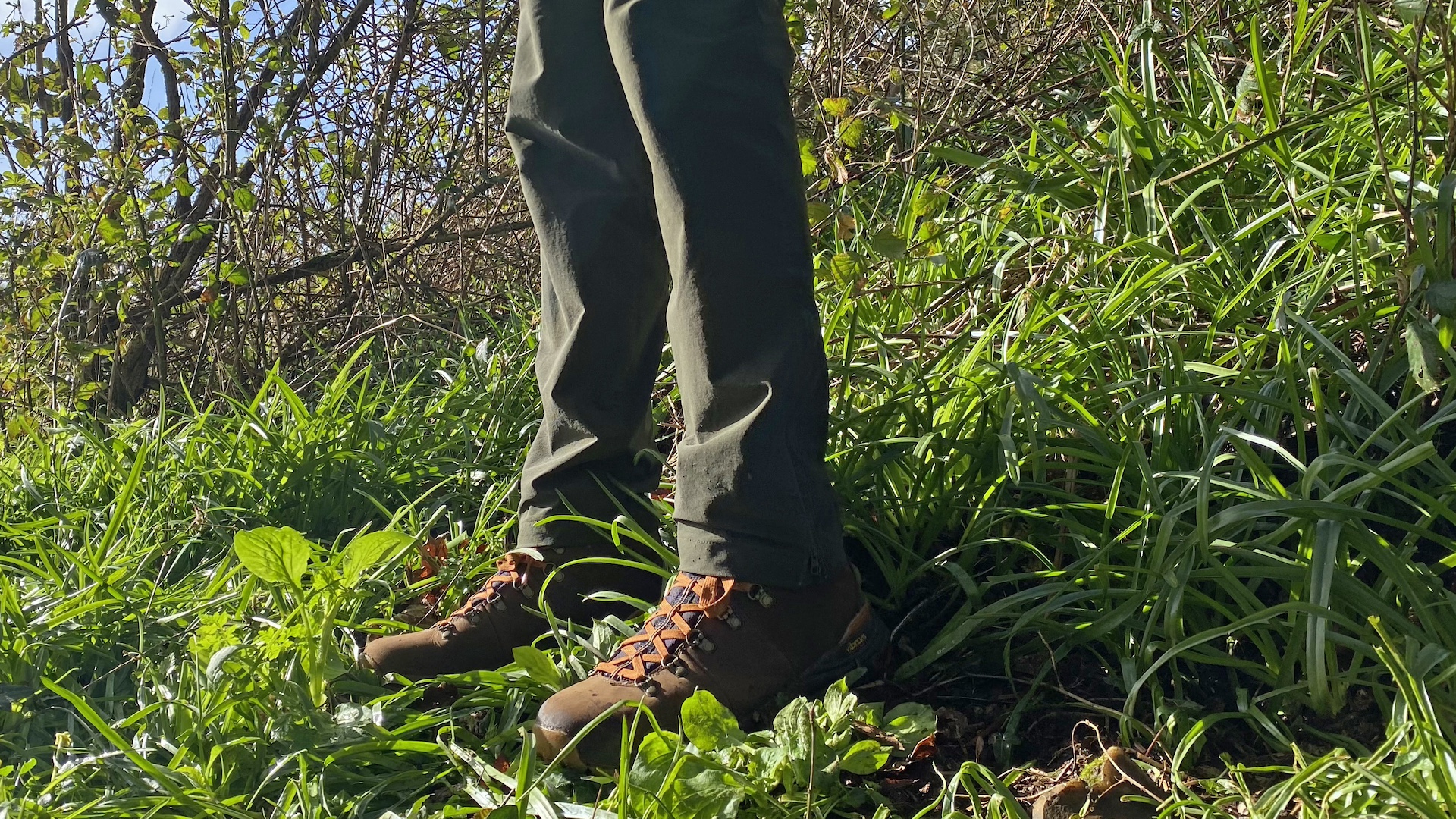
The outsole also has ‘flex lines’, however, which more noticeably enable the boot to bend as you take on the trails, perceptibly adding to the dexterity of the footwear. This does mean they lack the rigidity required for rock edging on more technical terrain, but these boots are designed more for low-alpine adventures and weekend-long escapades on fairly well-formed tracks and trails, rather than high mountain missions, so that’s fine.
For their intended purpose, they do offer excellent comfort and confidence, with good ankle support to help with balance when carrying a backpack.

Author of Caving, Canyoning, Coasteering…, a recently released book about all kinds of outdoor adventures around Britain, Pat has spent 20 years pursuing stories involving boots, bikes, boats, beers and bruises. En route he’s canoed Canada’s Yukon River, climbed Mont Blanc and Kilimanjaro, skied and mountain biked through the Norwegian Alps, run an ultra across the roof of Mauritius, and set short-lived records for trail-running Australia’s highest peaks and New Zealand’s Great Walks. He’s authored walking guides to Devon and Dorset, and once wrote a whole book about Toilets for Lonely Planet. Follow Pat’s escapades on Strava here and Instagram here.
